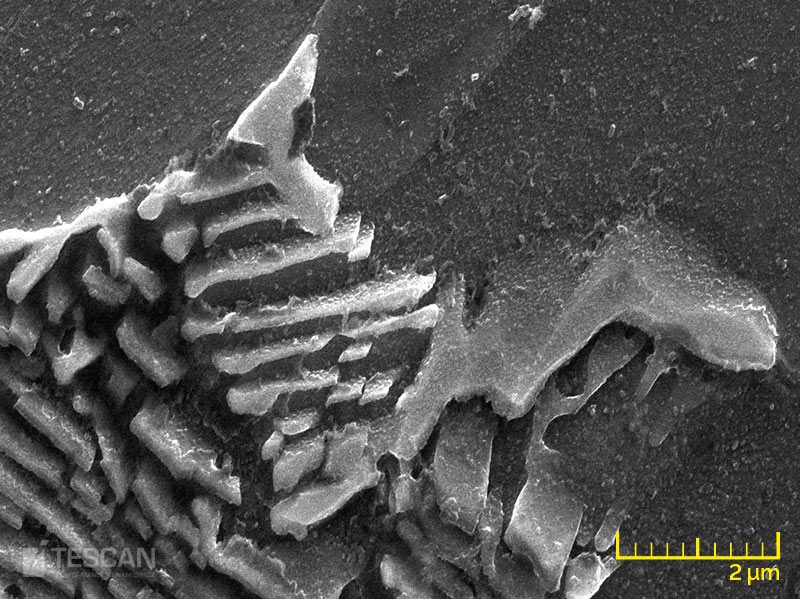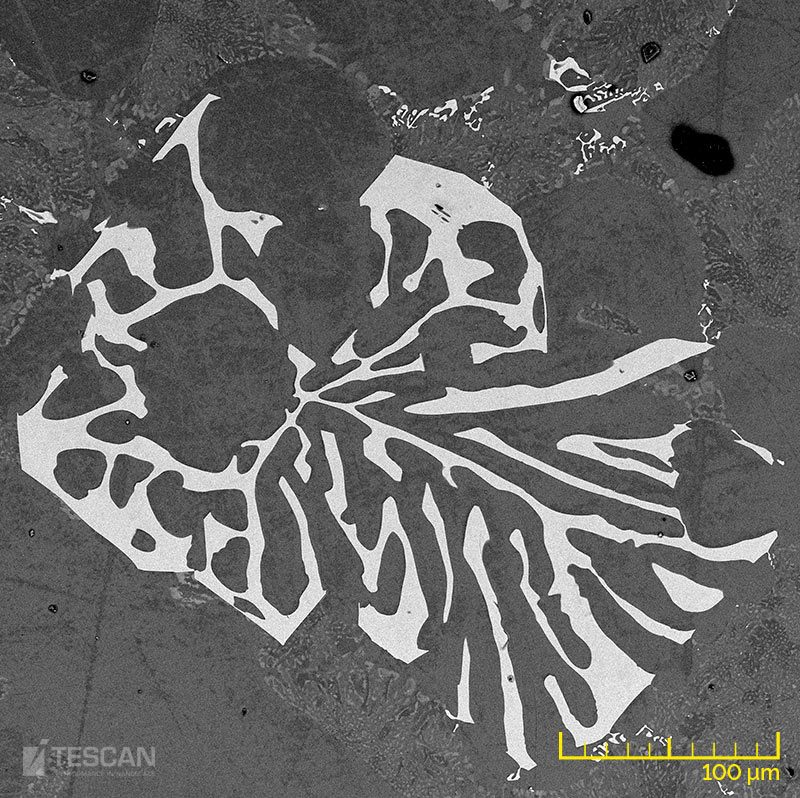Metal alloys are composed of two or more metals. These alloys usually have improved electrical, mechanical or electrical properties compared to their constituent components, which significantly extend their applications. Examples of alloys are steel, solder, brass, bronze, etc.

Inconel – fractured surface
- Steels and metal alloys are very important materials for engineering, construction, automotive and aviation industries.
- Steels are made of iron as the main element, with carbon and other elements such as manganese, molybdenum, nickel, referred to as alloying elements.
- Steels have a wide range of mechanical properties that can be modulated using different alloying elements and heat treatments.
Our patented aperture-free Wide Field Optics™ allows scientists to easily switch between different viewing modes. The Wide Field mode allows for imaging extra-large objects (e.g. damaged tools) at low magnification without distortions. The Depth mode is ideal for imaging samples with complex topography such as fractured surfaces. Detailed features such as carbides, grain boundaries, and dislocations are observed in the Resolution mode.
Dynamic micro-CT allows researchers to visualize 3D changes in metal specimens through uninterrupted in situ experiments. For example, compression of a metal foam or tensile testing of a metal dog-bone test specimen.
- Pearlite structure in steel
- AlSi10 – Metallographic sample – etched
- White cast iron – Metallographic sample – etched
- Austempered ductile iron – fracture surface
- Ag crystals from electrolysis
- 3D printed Ti-6Al-4V lattice structure imaged with micro-CT
- Uninterrupted tension test of Al 7075








